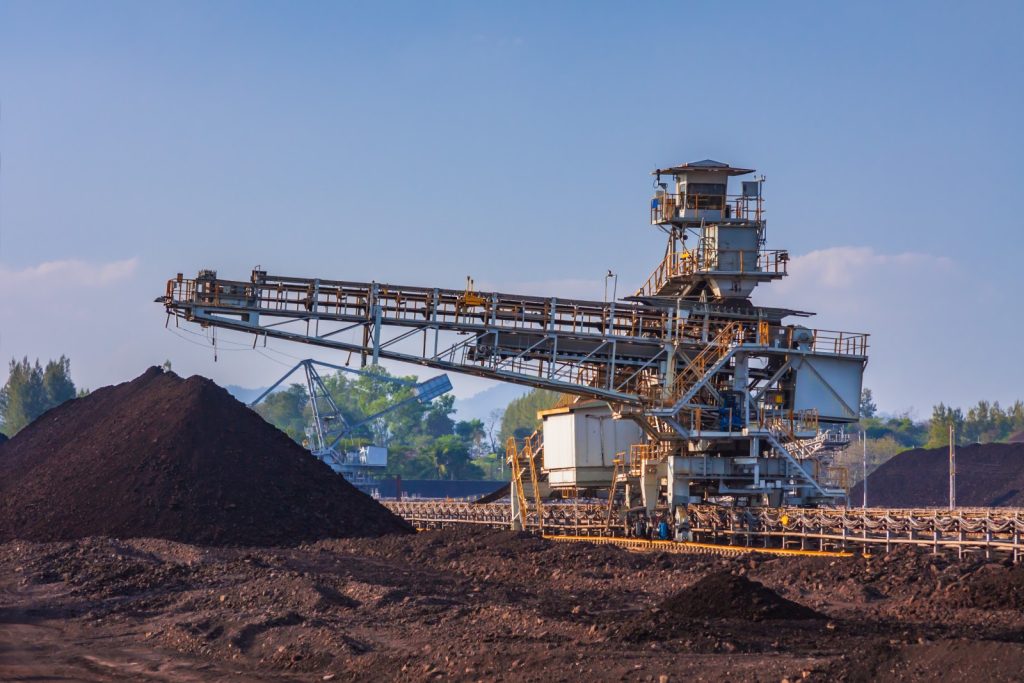
West River Conveyors will custom-build a stacker conveyor system to solve your toughest material moving challenges.
Our stacker conveyors can move up to 1,200 lbs of material per hour while reducing product damage, minimizing dust, and increasing productivity.
A stacker conveyor is a specialized type of conveyor designed to stockpile bulk materials efficiently. The system typically consists of a long, movable belt that transports materials in elevation from one location to another, forming an organized stockpile at the endpoint.
Stacker conveyors can move a wide range of bulk materials, including:
Materials get loaded onto the stacker conveyor belt. A motor and system of pulleys and gears move the belt in a continuous loop up to the top of the conveyor system. As the materials reach the endpoint, they get discharged onto a stockpile. Operators can adjust the height and angle of the conveyor to create precise, organized piles of material.
Customized stacker conveyor systems offer a wide range of benefits, such as:
Flexibility—With options for portable models as well as above-ground and underground applications, stacker conveyors adapt to different environments and project requirements.
Enhanced productivity—Stacker conveyors minimize labor requirements and increase productivity by automating material transportation and stockpiling.
Optimized storage space—The adjustable angle and height enable precise stacking and maximizing of storage space by creating uniform stockpiles.
Reduced material handling—Stacker conveyors efficiently transfer and organize materials into well-structured piles and minimize the need for double handling.
Improved safety—Automating the transport of materials also reduces the risk of accidents and worksite injuries.
Cost-effective—Stacker conveyor systems help to lower operational costs by reducing labor needs, streamlining processes, and minimizing equipment maintenance.
There’s no such thing as “one size fits all” when it comes to efficiently transporting material. Different mining operations have different needs, which is why we offer three main types of stacker conveyors for sale:
This type of stacker conveyor is fixed in place and can only create one stockpile at a time. However, you can physically move the whole unit to another location.
The stacker can extend the conveyor system to create a taller stockpile or move the dump point.
A radial stacker moves left to right in a radius and it can create as many piles as you need due to its rotational capability. We can also build one with an electric tram so the tires can rotate 90 degrees to pivot.
You can opt for several different automated and manual options to enhance your stacker conveyor such as programmable logic controllers (PLCs), sensors and remote monitoring functionality.
Our stacker conveyors consist of a wide range of components, including:
West River stacker conveyors come in many different material options and design features, including:
Load hoppers and feed hoppers tie into the stacker conveyors and provide trucks with an easy way to dump onto the stacker. The hopper is a big trough and meters the material that flows onto the stacker so that the system does not get overwhelmed. A belt feeder, bobcat, or transfer chute can load the stacker, which can work in conjunction with an overland conveyor system.
Our engineers will select the optimal belts, drives, and other components to suit the material you’re conveying. They’ll also configure the belt width, speed, and stacker length to ensure optimal performance. We pay particular attention to minimizing dust impacting moving parts and prefer to use troughed belts for maximum load capacity.
With over 40 years of experience, West River Conveyors is committed to understanding your needs and providing high-performance, long-lasting solutions. Our dedicated team, superior products, and exceptional service set us apart from the competition. Click below to learn more.
In today’s competitive mining environment, operational efficiency isn’t just a goal—it’s a necessity. From maximizing material throughput to minimizing downtime, mining companies are under pressure to improve productivity across the read more »
At West River Conveyors, we believe in being upfront with our customers, especially when changes in the global economy may impact your business. As a family-owned company proudly manufacturing conveyor read more »
A reliable conveyor system is essential for efficient mining operations. However, even the most well-maintained conveyor systems degrade over time, leading to inefficiencies, downtime, and higher operational costs. Knowing when read more »